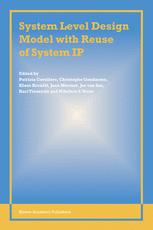

Most ebook files are in PDF format, so you can easily read them using various software such as Foxit Reader or directly on the Google Chrome browser.
Some ebook files are released by publishers in other formats such as .awz, .mobi, .epub, .fb2, etc. You may need to install specific software to read these formats on mobile/PC, such as Calibre.
Please read the tutorial at this link: https://ebookbell.com/faq
We offer FREE conversion to the popular formats you request; however, this may take some time. Therefore, right after payment, please email us, and we will try to provide the service as quickly as possible.
For some exceptional file formats or broken links (if any), please refrain from opening any disputes. Instead, email us first, and we will try to assist within a maximum of 6 hours.
EbookBell Team

4.7
96 reviewsThis book presents the perspective of the SYDIC-Telecom project on system design and reuse as perceived in the course of the research during 1999 - 2003. The initial problem statement of the research was formulated as follows: "The current situation regarding system design in general is, that the methods are insufficient, informally practiced, and weakly supported by formal techniques and tools. Regarding system reuse the methods and tools for exchanging system design data and know-how within companies are ad hoc and insufficient. The means available inside companies being already insufficient, there are actually no ways of exchanging between companies. Therefore, there hardly exists any system IP (Intellectual Property) industry. Although system design know-how is one of companies' main assets, it cannot be reused and capitalised effectively enough today. There is a lack of rational design flows supporting a design methodology based on reuse of IP, and few design tools to support it. Even guidelines on how to use existing tools in the design flow for this purpose often do not exist." The problem was known to be hard and the scope broad. The plan of attack was first to analyse the state-of-the-art and the state-of-the-practice, then to identify potential improvements, and finally to synthesise a formalised proposal for implementation. The approach was applied to different system-level issues, e.g. design flows, terminology, languages, reuse, design process and object of design.